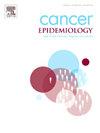Characteristics of long-term glioblastoma survivors diagnosed from 2010 to 2016 in the United States
IF 2.3
3区 医学
Q3 ONCOLOGY
引用次数: 0
Abstract
Background
Glioblastoma (GBM) is the most common malignant primary central nervous system (CNS) tumor, accounting for half (50.9 %) of all malignant tumors diagnosed in the US. We conducted a population-based analysis using Centers for Disease Control and Prevention’s (CDC) National Program of Cancer Registries (NPCR) survival database investigate which patient- and tumor-level factors are characteristic of long-term survivors (LTS) of GBM.
Methods
Individual-level survival data containing diagnoses of primary GBM were obtained from the NPCR survival database for cases diagnosed during the period of January 1st, 2010 to December 31st, 2016, and followed through December 31st, 2019. Differences in LTS (>36-months) were investigated using χ2 tests and multivariable logistic regression. Frequency of IDHmut-GBM by age was estimated in the same dataset from 2018 to 2021.
Results
Of the included GBM, 11.6 % met criteria for LTS. After adjustment for known prognostic factors, males (OR=0.78, p < 0.001) and age > 60 at diagnosis, were all significantly associated with decreased odds of LTS (70–79 years O =0.48, 80 + years OR=0.21, both p < 0.001). Frequency of IDHmut-GBM peaked from 25 to 34, with < 5 % of GBM in those > 50 having IDHmut-GBM. In a sensitivity analysis in those > 50 diagnosis, both male sex and age remained significant predictors of LTS
Conclusion
There are multiple patient- and tumor-level factors that are associated with improved survival in GBM, with the strongest effect sizes in the multivariable models being due to age. These results demonstrate substantial heterogeneity in GBM prognosis and emphasize the distinct survival advantage associated with age at diagnosis.
2010年至2016年在美国诊断的长期胶质母细胞瘤幸存者的特征
胶质母细胞瘤(GBM)是最常见的原发性中枢神经系统(CNS)恶性肿瘤,占美国所有恶性肿瘤诊断的一半(50.9 %)。我们使用疾病控制和预防中心(CDC)国家癌症登记项目(NPCR)生存数据库进行了一项基于人群的分析,调查哪些患者和肿瘤水平的因素是GBM长期幸存者(LTS)的特征。方法从2010年1月1日至2016年12月31日诊断的NPCR生存数据库中获取包含原发性GBM诊断的个体生存数据,并随访至2019年12月31日。采用χ2检验和多变量logistic回归分析LTS(36个月)的差异。在2018年至2021年的同一数据集中估计了按年龄划分的idhmut1 - gbm的频率。结果纳入的GBM中,11.6 %符合LTS标准。在对已知预后因素进行调整后,男性(OR=0.78, p <; 0.001)和诊断时年龄>; 60均与LTS发生率降低显著相关(70-79岁O =0.48, 80 +岁OR=0.21,均p <; 0.001)。idhmut1 -GBM的发病频率在25 - 34之间达到高峰,在患有idhmut1 -GBM的人群中,占GBM的比例为<; 5 % >; 50。在对那些>; 50诊断的敏感性分析中,男性性别和年龄仍然是lts的重要预测因素。结论:有多个患者和肿瘤水平的因素与GBM的生存率改善相关,在多变量模型中,年龄的效应最强。这些结果显示了GBM预后的巨大异质性,并强调了与诊断年龄相关的明显的生存优势。
本文章由计算机程序翻译,如有差异,请以英文原文为准。
求助全文
约1分钟内获得全文
求助全文
来源期刊

Cancer Epidemiology
医学-肿瘤学
CiteScore
4.50
自引率
3.80%
发文量
200
审稿时长
39 days
期刊介绍:
Cancer Epidemiology is dedicated to increasing understanding about cancer causes, prevention and control. The scope of the journal embraces all aspects of cancer epidemiology including:
• Descriptive epidemiology
• Studies of risk factors for disease initiation, development and prognosis
• Screening and early detection
• Prevention and control
• Methodological issues
The journal publishes original research articles (full length and short reports), systematic reviews and meta-analyses, editorials, commentaries and letters to the editor commenting on previously published research.
 求助内容:
求助内容: 应助结果提醒方式:
应助结果提醒方式:


